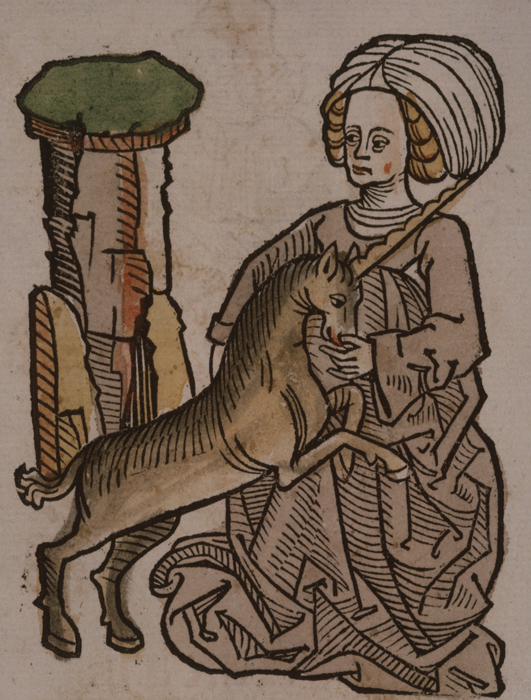Page 2
Medical knowledge in the fifteenth century encompassed matters far beyond the scope of modern medicine, and so any attempt to replicate a medical library of that period meant collecting works in a wide range of subjects. While standard texts in anatomy and surgery would be the obvious foundation of such a library, botanical books, for their influence on pharmacy, would also need to be included. Along with dictionaries and vocabularies, such a library would contain works in the allied fields of science, such as mathematics and astronomy, and might also conceivably have holdings in natural history, alchemy, magic, witchcraft and demonology, astrology, and chiromancy. Editions of classical works of poetry, philosophy, and history might well also be found, as the lines between medical knowledge and other disciplines were less rigidly defined during the Renaissance than now. Works in all of these subject areas, including texts of Plato, Cicero, Tibullus, Thucydides, and Petrarch, are preserved in the rich array of incunables here at the Countway.
The famous names and the earliest editions of the great works in medicine, from Greek antiquity through the late medieval and Renaissance period, including Hippocrates, Celsus, Galen, Avicenna, Albertus Magnus, Ugo Benzi, Bernard of Gordon, Hieronymus Brunschwig, Guy de Chauliac, Marsilio Ficino, Michele Savonarola, and Johannes Trithemius, are all well represented in the collection. Sir William Osler, in his Incunabula medica (1923), identifies the De sermonum proprietate(Strassburg, circa 1467) of Rabanus Maurus as the first printed book containing a chapter devoted to medicine, and the Boston Medical Library holds a copy of even this rare item.
Along with medical texts, broadside almanacs and calendars documenting the appropriate or propitious days for bloodletting and purging were also commonly produced by printers in the fifteenth century; Sir William Osler believed a 1457 bleeding calendar from Mainz to be the very first example of a medical publication. With twenty-four specimens predating 1501, the series of almanacs held by the Boston Medical Library is the largest in the United States and one of the great jewels of the incunable collection.

